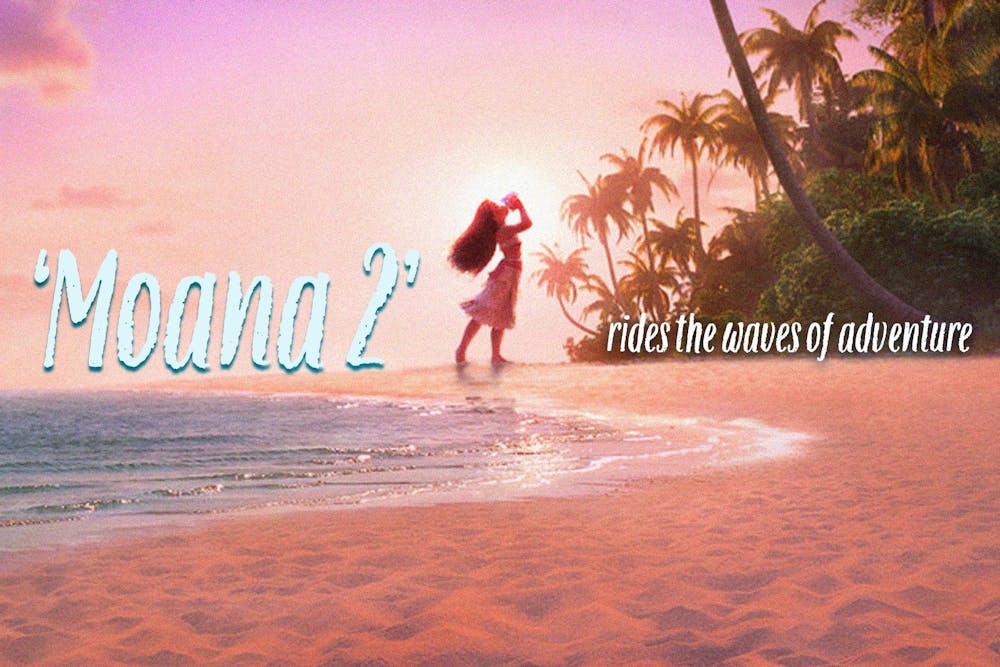“Moana 2” is the sequel to the ever popular “Moana” film released in 2016. In the time since we last saw her, our titular character has has assumed a new leadership role in her village and has begun a new voyage across the ocean, guided by a mysterious call from her ancestors to reconnect the other islands in the sea. In her new role as a “wayfinder,” she learns about her heritage, responsibility and how to be a strong, reliable leader for her people. The audience is revisited by familiar characters like Maui, Pua and Hei Hei the chicken, but is also introduced to an adorable new character: Moana’s little sister Simea. In watching this film, I found their tight bond endearing. For instance, Moana left the island but gifted Simea a seashell that she could use to communicate with Moana, which Simea used to tell Moana she missed her. Another example of this charming bond was when Simea hid in Moana’s suitcase before she left to stop Moana from leaving. As someone who does not have siblings and envies those who have the gift of a fraternal bond, I felt a warmth in my heart to see two people love each other so much that it was nearly impossible for them to say goodbye.
I appreciated this film, as well as the original “Moana” because even as Moana collaborated with others to be an effective leader, she didn’t rely on a particular person (especially a man, unlike many female protagonists) to achieve her goals. She didn’t need anybody to rescue her, but asked for help to bring the islands together. This is crucial for children to learn because the film shows that people can and should ask for help but don’t need someone to come and save them. Though many modern films fall short in teaching important life lessons, “Moana 2” shows young people that they are strong enough to speak up for themselves, make decisions and reach their aspirations. The graphics and animation were also strongpoints in the film.
I’ve always loved Disney’s animation style (although nothing compares to the nostalgia of the pre-2000's style), but I especially appreciate the way the animators utilize color to truly brighten the screen and make the viewer feel immersed in the story. The enticing graphics made me wish I could go to Moana’s village myself. The lighting, rendering and fluid dynamics of the ocean made the viewers see the ocean as an important character that drove the movie’s tone and plot with its dynamic reflections, waves and character interactions. Additionally, the islands, villages and tropical setting makes every scene vibrant and detailed. These visuals were matched beautifully with the film’s soundtrack, which drove the tone of the film. My personal favorites from the soundtrack include “We Know The Way” and “Beyond” for the way they not only influence the audience’s emotions during the film, but also bring the film’s overall message about leadership and community to life. Specifically the song “We Know The Way” speaks to Moana’s new role as a wayfinder. The title suggests a certainty in knowing the way, while Moana’s journey throughout the film demonstrates how uncertainty can shape you into a better leader. This concept demonstrates to younger viewers that uncertainty should be embraced, rather than feared.
Overall, “Moana 2” was a fun, lighthearted sequel to the first film, and I recommend it if you’re looking for a simple, happy-go-lucky movie. However, the sequel cannot beat the original film’s characters, soundtrack and storyline.










